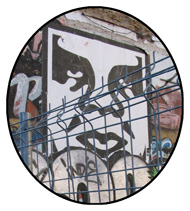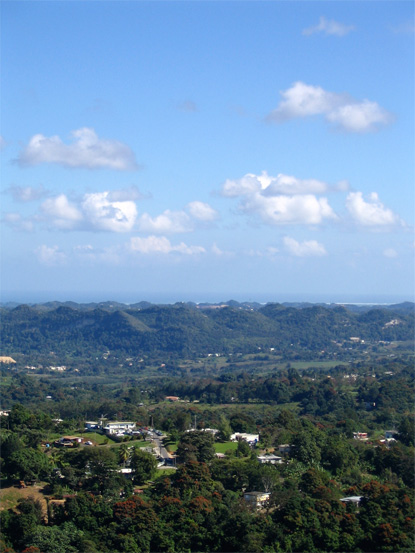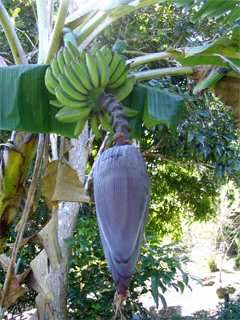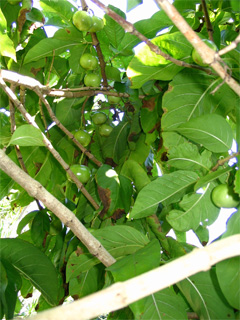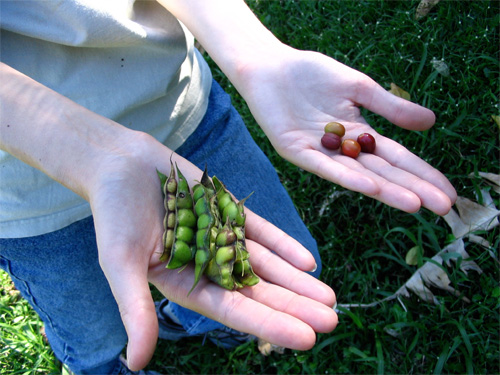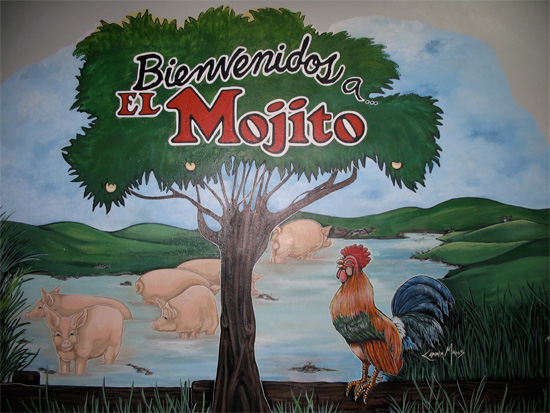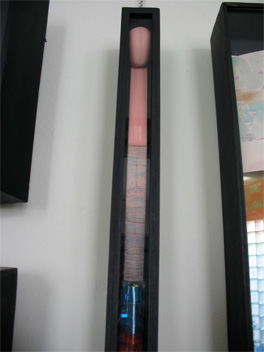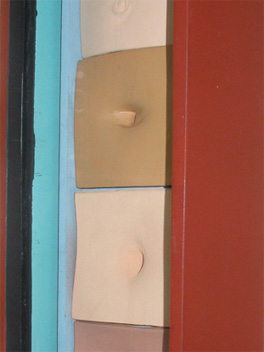|

Where the Buffalo RoamGood evening. It’s been another sunny, mild, murderous week in Puerto Rico. Seventy-two dead in felonious mayhem so far this year, friends and neighbors. So as we like to say, take a deep breath ‘cause we’re just getting started. 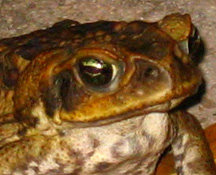
The superintendent of police, Pedro Toledo, has assured us he is on the case, shuffling officers about, having meetings with staff, shaking his ample jowls and casting a flinty eye at the camera during photo ops. Of which there are uncomfortably many these days, no doubt. About a week ago, over in Rio Grande, two of his officers, a married couple, dispatched her mom and dad and her sister-in-law and gravely wounded her brother in a wild bout of internecine gunplay which was provoked, apparently, by a family disagreement over
some speedbumps. These are called “muertos” hereabouts. Curious, isn’t it? Could this be part of Toledo’s mysterious plan? Meanwhile, a little further from home, who has not read of, and marveled over, the love-sick astronaut and her wig-hat and trenchcoat and diaper? Her bb gun, knife, steel mallet, and pepper spray, with which, she maintains, she hoped merely to “talk to” her rival for the affections of a fellow space cadet? Well, folks, it’s like that here, too, in a way. We would be nincompoops to complain, however. Unspeakable yahoos, even. We just returned from three days at the Corozal aerie of Titi Noris, gazing across the vista you see below—yes, indeed, that is the blue Atlantic off in the distance—and yuking it up as if there was no tomorrow. We spent much of our time sitting like poobahs on the porch of the house which Titi Noris herself built with considerable sweat of the brow, while our industrious hostess piled on the habichuelas and mango pudding. My goodness, the belt came out at least three notches.
Puerto Ricans love their chickens, so we got some exercise chasing a couple of bad neighborhood dogs and chucking rocks in their general direction, the little these pea- brained sacks of drool cared. We were more successful traipsing around Titi Noris’s acreage and gawking at the verdure.
Even as we were indulging our selfish pleasures to the max, we couldn’t help thinking about the poor lechones who might be snuffling through the nearby underbrush, fattening themselves unawares for that fateful trip to Guavate and La Ruta Lechonera.
It so happens that we had hit the Lechón Trail not long ago in the company of Guillermo Rodríguez, presiding spirit of the Puerto Nuevo gallery, La Casa del Arte. We rode with Rodríguez to the Ponce home and studio of Julio Micheli to see works the artist was preparing for his upcoming Casa del Arte show, Cosas del Mago. For those who know Micheli for looming, bright abstract slather, this exhibition will be unexpected and well worth a look-see. Micheli is a man of abundant talents and fascinations, possessing the keen intellect and expansive wit that once characterized the art world’s truest bohemians. He is an inveterate collector—electric trains, small cameras, duck decoys, coffee grinders, you name it—and for some time now he has been busying himself with a series of wooden boxes which you might say showcase one of his more arcane collections, his inventory of artistic ideas. He has not lost any of his abstractionist’s roundaboutness, but, as the details here show, these are vivid, tangible, pleasurable objects for all their elusive meaning.
The exhibition opens on Thursday, February 15th, at La Casa del Arte, Calle Andalucía #500. Call 787-792-7373 for information or visit the web site at www.lacasadelarte.com. Speaking of unexpected pleasures, a few nights ago we were having a late dinner at one of our fave Viejo San Juan hideaways, Bodega Chic, with one of our fave former contemporary-art-curators-turned-auction-house-functionary, Marysol Nieves. The conversation hovered, as it always does when curators and art world hanger-ons get together, around the new job, what’s happening in the greater world, and the always muy chistoso local scene, with its chronic itch: that touching mix of decent chops, eternal hope, and an acute, and barely concealed, mortification about underdevelopment. The island wallows in its extended pubescence. Puerto Rico, and San Juan in particular, has always seemed to us much too eager, ever ready to throw itself like a tomcat in full-throated blueball mode at the imperious pussies that rule the global scene. The selfsame art dealer Guillermo Rodríguez, for example, is presently in a giddy froth, about to jet off to Scope New York with a cadre of young bright-eyes he has already drayed to Art LA, Gamaliel Rodríguez-Ayala and Rogelio Báez-Vega among them. Better bright than beady, we always say. 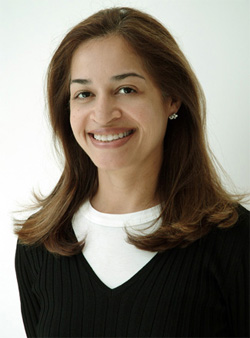
Getting back to Nieves, from the late 1980s until her recent defection to the dark side, she was a curator in various institutional settings. She spent twelve fruitful years at the Bronx Museum during a time when the art world—and much of the rest of our cultural lives—was defined in part by something called identity politics. For Nieves, whose outlook was forged by an internship under the wing of the remarkable Lowry Sims in the 20th century department of New York’s Metropolitan Museum of Art, serving the local community was every bit as much a part of curating as putting paintings on the walls—or installations in the vestibules—and she describes her Bronx Museum tenure with the verve and evident pleasure of a raconteur.
We bring this up because in the time that followed, Nieves eventually found her way back home, here to San Juan, Puerto Rico, where she had decamped for
New York many years before, as soon as she completed her undergraduate studies at Universidad de Puerto Rico, Recinto Río Piedras. She skedaddled, in other words, as any intelligent, ambitious art world hopeful would, the moment she caught sight of her future. Almost two decades later, after stints working for the Bronx Museum and the Americas Society, she returned to the island at the urging of local contemporary art collector Diana Berezdivin—then the chair of the acquisitions committee of Museo de Arte de Puerto Rico (MAPR)—who was certain that Nieves had the bona fides and desire to lead that chronically underachieving institution into the twenty-first century. Alas, like all too many boricua tales, the story of Marysol Nieves at MAPR is brief and bittersweet, managing only in the end to rise above the squalor of its setting. Nieves lasted at MAPR just over a year, organizing, among other shows, The Figurative Impulse—selections of modern and contemporary works from the UBS Collection—and working with New York’s El Museo del Barrio on last spring’s The (S) Files, both of which were highly praised by local observers for their exhibition design. She created a program for the museum’s project space guided by an expansive idea about what both “contemporary” and “local” can mean in the often crabbed perspective of the island art world, inviting smart young turks like Alora and Calzadilla, Anthony Goicolea, and Milton Rosa-Ortiz to show recent works. It was an effort which would make any solid, forward- looking institution anywhere look good. Beyond her highly public exhibition work, according to Berezdivin, Nieves took her behind-the-scenes duties very seriously. She liked to visit artists’ studios, and she was vigilant about acquisitions and conservation, knowing very well that the safekeeping and nurturing of the museum’s collection is the key to the institution’s the future. “She wanted to buy with a vision toward building the collection,” Berezdivin says, “and not just whatever is being offered at the moment. When you have a vision, you study the collection, then you go out and look for what you want. She was very professional. She had high standards.” Although Nieves would never couch it in these terms, we have no doubt that she was outmaneuvered and finally worn out by an obdurate system of dubious museum practices and the institutional inertia that stifles innovation at all levels of Puerto Rican society. Once Berezdivin, her patron, left the museum board under less than cordial circumstances, the smart money doubted that Nieves herself would stay. Sure enough, by the fall of 2006, the curator announced that she and MAPR were parting ways. After a brief respite to consider her curatorial options, Nieves appears to have left honest work altogether, joining the staff of the art auction house Sotheby’s in their Latin American department. We like to kid Nieves about selling out, but as we lingered over our cafecito and profiterole at Bodega Chic, it became apparent that she has learned a great deal in a short time and enjoys visiting collections throughout Latin America, an activity she thinks of as not all that different from what she’s always done. It appears that her brush with Puerto Rican institutional life took nothing away from her discernment or enthusiasm for art and the people that surround it. Barcelona awaits here. |

